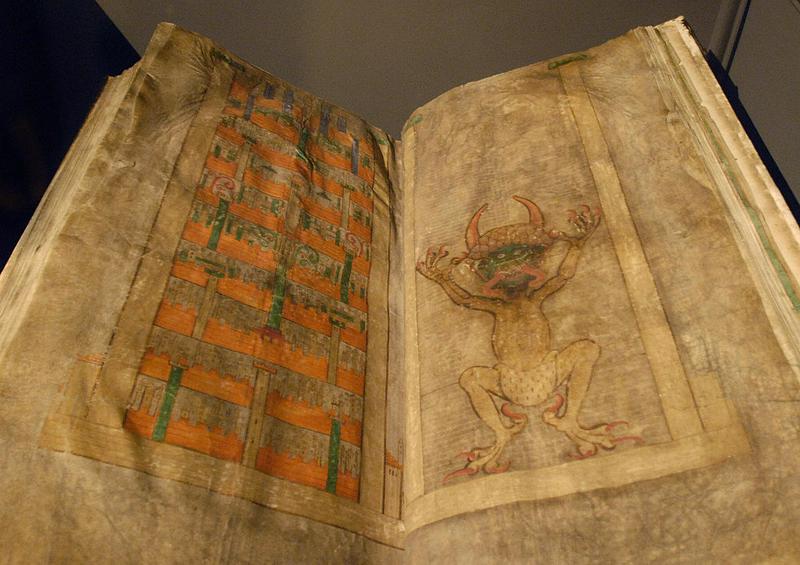The Codex Gigas: The Devil’s Bible And Everything We Know About It
By | October 5, 2020

Of the volumes of medieval texts that have survived for centuries, one book in particular stands out. The largest of all medieval books, it rightly earned the name Codex Gigas, or "giant book," but what is found within the pages of this 165-lb. volume earned it a much more sinister nickname: The Devil's Bible.

The Spooky Spoils Of War
The Codex Gigas may have stayed hidden in a monastery in Prague had it not been for the Thirty Years' War. Swedish soldiers who sacked Prague in summer 1648 during the final battles of the war didn't realize until they were back home that they had pilfered a most unusual find. It seems like it would be hard to lug a book the weight of a person, and not a willowy one, either, across several countries without considering that it might be something notable, but hey, it was a chaotic time.

The Devil's Bible
The so-called Devil's Bible is pretty much your standard Vulgate Bible, plus some miscellaneous extras, but page 290 of the Codex Gigas takes a hard left with a full-page illustration of the devil. Satan was a frequent subject in medieval art, but his portrait in the Codex Gigas is different. The drawing is believed to be the only image of the devil to appear in a bible, and he appears alone, not tormenting helpless humans as he is depicted in other medieval art.
On the opposite page is another full-page drawing, called the City of Heaven, illustrating the glory and splendor of that blessed afterlife. In the Middle Ages, it was common practice to display a book open to a key page, and it's believed that the juxtaposition of these images was intended to demonstrate to churchgoers the delights that awaited them if they resisted the devil's temptations. In that case, it's interesting to note that, in this image of heaven, there are no people.

Inside The Codex Gigas
The Codex Gigas may not contain the complete volume of human knowledge, but it came close. In addition to the entire Old and New Testaments, the Devil's Bible contains various texts on prayer and penitence. Two works by first-century Jewish historian Flavius Josephus, The Jewish War and Antiquities Of The Jews, are included in the Devil's Bible, along with The Chronicle Of Bohemia, penned by monk named Cosmas around 1100 C.E. The Codex Gigas also includes medical and scientific information and the complete encyclopedia of St. Isidor of Seville.
During the medieval era, demonic possession was thought to be as common as the Plague, so it's not surprising that the Devil's Bible contains a wealth of advice and instructions on exorcising the devil from a person's body or cursed objects. What is surprising is that such information would be included by the supposed author of the Devil's Bible.

Who Wrote The Codex Gigas?
According to legend, the devil doesn’t just grace a page in the Codex Gigas; he had a hand in writing the book. Supposedly, a monk who violated his monastic vows and was sentenced to be walled up alive offered to write a book that contained all of human knowledge and bring fame to the monastery in an effort to escape his punishment. Oh, he also promised to produce this book overnight. Left alone, the monk feverishly wrote, but when he realized he wouldn't even come close to finishing his work by sunrise, he offered his soul to the devil for assistance. Satan agreed, as he's inclined to do, but demanded that his image be left within the pages.
While the devil's involvement is questionable, experts who have studied the Codex Gigas have indeed surmised that the entire book appears to have been written by a single person. That's no small miracle in itself: The book is so large and comprehensive that even if its author wrote eight hours a day, every day of the year, it would have taken them more than 20 years just to complete the text. With the artwork and other adornments, the Codex Gigas surely took decades, possibly the entire life of the scribe, to complete.

